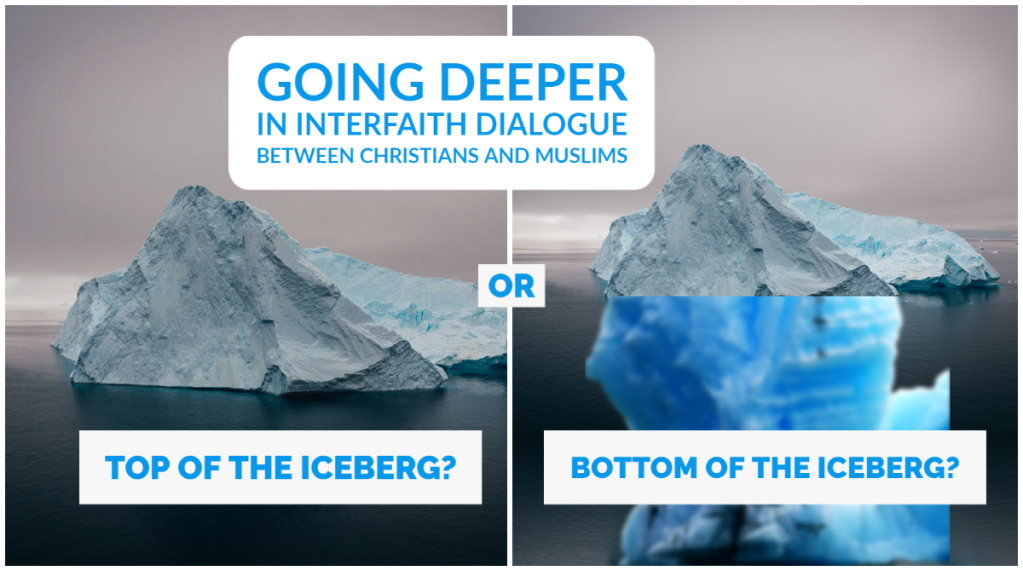
Recently, I was thinking about the similar words that both Christians and Muslims use like forgiveness, God, Abraham, and sometimes ‘salvation’. Christians and Muslims must establish bridges of continuity between each other for relational purposes but we must never neglect to go deeper than the surface in our conversations. Often, we relate on the top of the iceberg but the majority of the iceberg is deep beneath the water and that is where authentic interfaith dialogue takes place.
Below is an analogy I would like to propose that highlights the relationship between the Bible and the Quran that really can be applied to the relationship between the whole Islamic system and that of the Biblical storyline. It was inspired by an analogy that Mark Durie provides in his book, The Qur’an and Its Biblical Reflexes. I am positive that Durie’s illustration is more helpful but operating off of memory, here is my rendition of something like what I believe he communicates in the book.
AN ANALOGY: THE RELATIONSHIP BETWEEN THE BIBLE AND THE QURAN
Suppose there is an old Roman building that was formerly used as a military fortress that gradually falls with the passage of time; yet much of the original stone materials are reusable. A person comes along who has a love for Roman culture and history and desires to restore the building to its original glory and create a museum. After careful study, he accurately rebuilds the original structure with the same materials, not with the goal to create a new building, but to build upon what was already there and to restore the former structure. The new structure will be used for a different purpose than it was used for in Roman times, but if a Roman were alive who saw the original building, he would immediately recognize the continuity between the old and the new structure though one was a military fortress and the other is a museum. There is continuity between the meaning and use of the building materials between the two time periods though the building’s use is different.
However, suppose another 500 years pass and the second structure finally caves in again, but those original materials are still useful and another person comes along and wants to reuse the materials. This new architect is somewhat aware of the building’s Roman heritage and even the former Architect who restored the building 500 years ago into a museum, but he really does not care because his goal is quite different. This new architect desires to use the materials to build something unique, something different, something discontinuous from the previous two buildings. After bringing in several dump trucks, he hauls all the rocks and materials 5 miles down the road. After building a new foundation, he then scatters the old Roman stones throughout the building in various places on the floor and walls, creating a sort of mosaic of old and new materials. This new building is a school and it looks nothing like the original two structures though it does have some of the same materials. The old materials have been given new meaning, creating a new structure and therefore, there is no real continuity other than the materials themselves (stones etc…).
CONCLUSION
If we take this analogy very loosely, Israel is the original building along with the teaching of the Old Testament, and Christianity is the second building along with the New Testament, and Islam is the third structure. Laying aside the very complicated discussion of the first two buildings and the continuity/discontinuity between Israel and the Church, what is important here to understand is that Islam is completely different than the previous storyline and there is little continuity. While there are similar words in the Quran used in the Bible, and similar religious words that Christians and Muslims utilize in regular conversation, Islam has given these words new meaning, and thus, they are very different.
In closing, Christians and Muslims who engage in interfaith dialogue should establish a ‘bridge’ at the surface level to start their conversations but they must move below the surface in order to have deep dialogue regarding the meaning of various common religious terms such as ‘salvation’ and ‘forgiveness’.